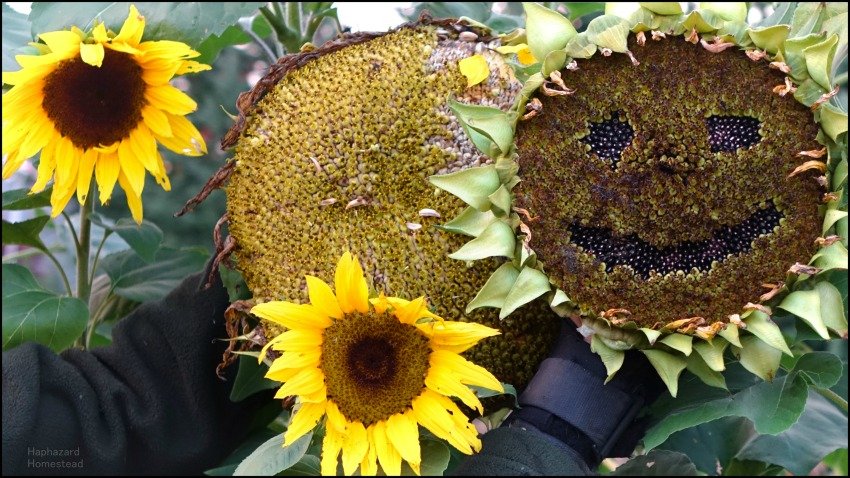Sunflowers are pretty. But their unopened buds are good eating, too! I’ll show you four different ways to cook with sunflower buds, including one that makes an inexpensive, easy-to-grow substitute for artichokes!
I’ll also give you a couple strategies for growing sunflower buds to eat, even if you live in neighborhoods with strict rules about gardening, or if you want both flowers to look at and buds to eat. First, let’s take a closer look at sunflowers.
Verification: These are my own original photos. You can verify me by going to my YouTube channel "Haphazard Homestead" and check in the about section for a statement that I have a blog on Steemit. Feel free to say howdy from a Steemit user in the comments to any of my videos and subscribe to my channel.
Sunflower Basics
Sunflowers have incredible variety
Sunflowers grow in sizes ranging from dwarfs standing less than 2 feet high, to giants reaching more than 10 feet. Sunflower plants can have one central flower or be a multi-flowering type with branches and flowers that splay out with abandon.
Sunflower heads can be huge, nearly 2 feet across, like the types that produce the large gray and white sunflower seeds that we eat. Oil black sunflowers are grown for their seeds, too, mostly for bird seed and sprouting indoors for microgreens in the winter.
Double sunflowers look more like giant chrysanthemums. And the new varieties developed for the florist trade have colors ranging from deep burgundy to nearly white, and combinations of classic autumn colors.
Every variety of sunflower that I have tried, has tasted good – giant sunflowers, oil black sunflowers, and ornamental sunflowers.
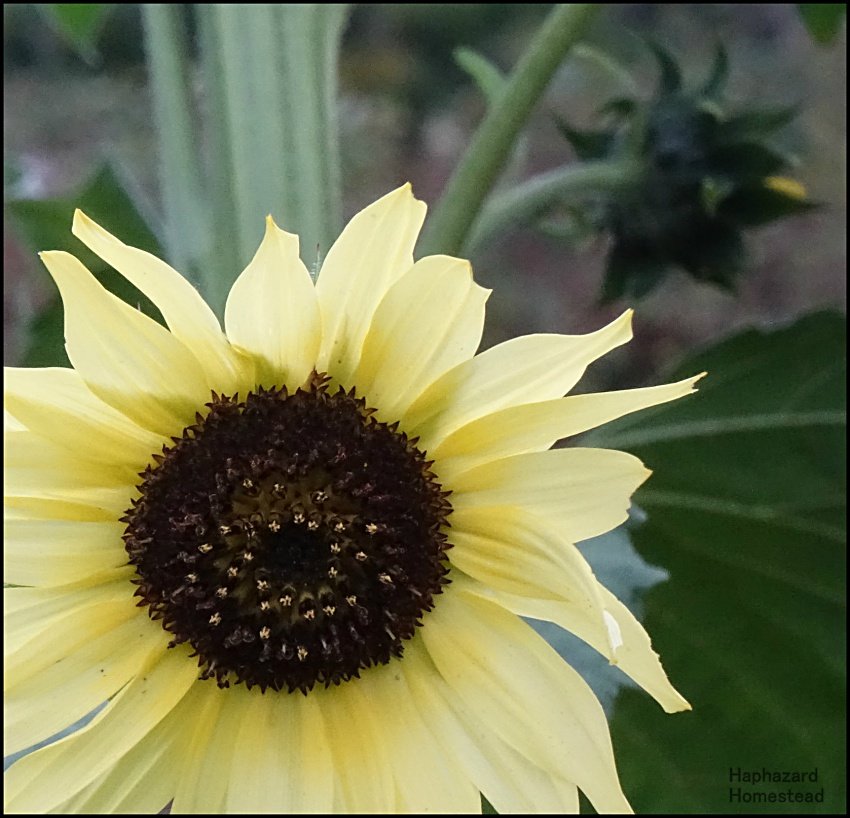
There are perennial sunflowers, too
For these sunflower bud recipes, I’m using the annual sunflower, Helianthus annuus. There are two other edible sunflowers that are perennials. The Maximillian sunflower (H. maximiliani) has fat, edible rhizomes. And the Jerusalem Artichoke (H. tuberosus), also known as sunchokes, has an even bigger edible tuber. I’ll write about those plants in the future.
Annual sunflowers are easy to grow
Annual sunflowers are easy to grow. They do best with rich soil and a steady supply of water, but they can do OK with a lot less. You can sow sunflower seeds in your garden right after the last frost. Or you can start them earlier, indoors, and transplant them out. Personally, I prefer direct seeding because it’s a lot less effort!
Avoid these sunflowers
I avoid growing sunflowers from seed treated with neonicitinoids, type of insecticide. Neonicitinoides are systemic, meaning the insecticide is carried from the seed to every part of the plant as it grows. It affects all kinds of insects, including bees and other pollinators. So I grow sunflowers from seeds that are labeled as untreated or organic.
Heed these precautions
Do I have to say it? If you are allergic to sunflower seeds or sunflower oil, you probably shouldn’t be trying to eat sunflower buds. If you are trying a new food, don’t pig out the first time. If you use pesticides on your sunflowers, it’s up to you to know whether you want to eat them.
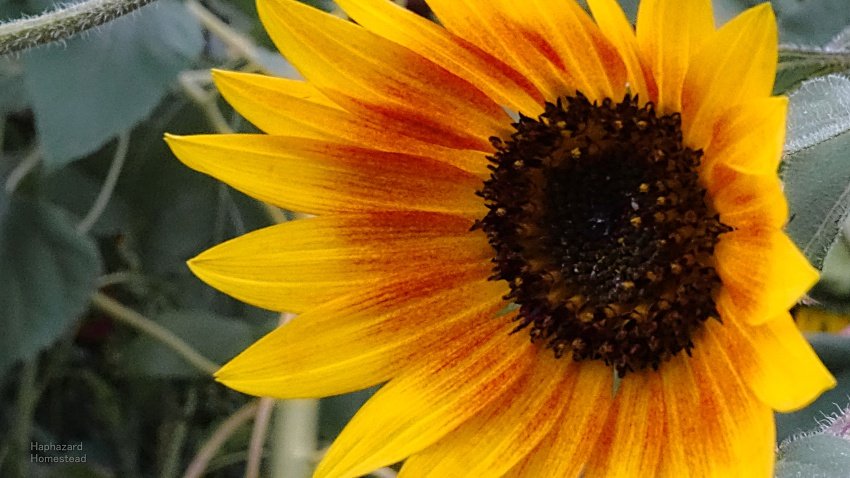
Growing Strategies
Double-crop for maximum garden production
Even though sunflowers can be sown right after frost, they can be planted late in the garden season, too. Sunflowers planted later put their flowers on quickly in response to the shorter days. I’ve planted sunflowers as late as July 20 in Oregon’s Willamette Valley and harvested buds in September and October. So if you want to double your garden production, plant sunflowers after a crop that you can harvest by mid-summer. Peas, spinach and other spring greens, or green onions would be great options for double-cropping with sunflowers.
Grow for flowers and for food
Of course, if you are picking the flower buds of a plant, you are taking the future flower, too. Here’s a strategy for having plenty of sunflower flowers, even if you are eating their buds -- plant the multi-flowered varieties. Their flowers and buds are smaller than the giants, but you can have your flowers and eat some buds, too.
Even with single-flowering sunflowers, you can still have both food and flowers. I can’t guarantee this works for every variety of sunflower, but it’s worked on every kind I’ve tried it on. Take that single, top bud off and the plant will start to put on side buds, at the junction where leaves attach to the stalk. Those flowers will be smaller, but that’s better than nothing.
Hide a food crop in a flower garden
If you can’t have a food garden in your front yard, plant some of the decorative sunflowers, like Teddy Bear, Lemon Queen, or any of the colorful varieties developed for the florist trade. Dwarf sunflowers make great annual bedding plants. And they can stand up to summer heat, too.
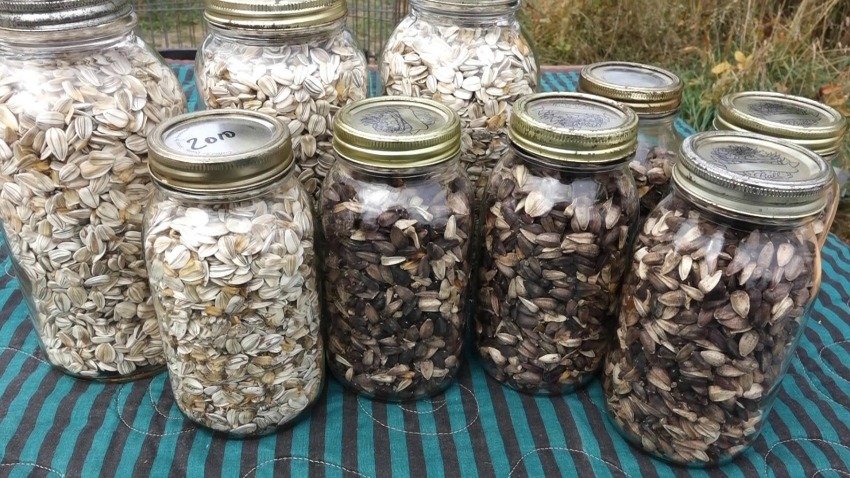
How to Harvest and Process Sunflower Buds
Pick those buds
Picking sunflower buds isn’t complicated. Just pluck or cut off the buds before the flower opens up. As the flowers start to open, the bud get a stronger pine flavor. I’ll pick some that have just started to open and show their flowers, but that’s about as far as I go. Second-growth sunflower buds will be smaller than the first ones you harvest. And, in my experience, they have a stronger pine taste than the first buds.
Trim and blanch those buds
If you are using smaller sunflower buds, start by cutting off the stalk and base of the bud, so the back is flat. With bigger buds, it’s easier to leave the back of the buds on until they have been blanched.
No matter how you are going to eat your sunflower buds, you need to blanch them. It’s not hard. Get two pots of water boiling. Drop the trimmed buds in one pot. Let them boil for three minutes and then drain.
Put the blanched buds in the second pot and boil until they are tender, so a knife can go through a bud easily, without much resistance. Take the buds out of this second pot of water – and save that water! It’s tasty!
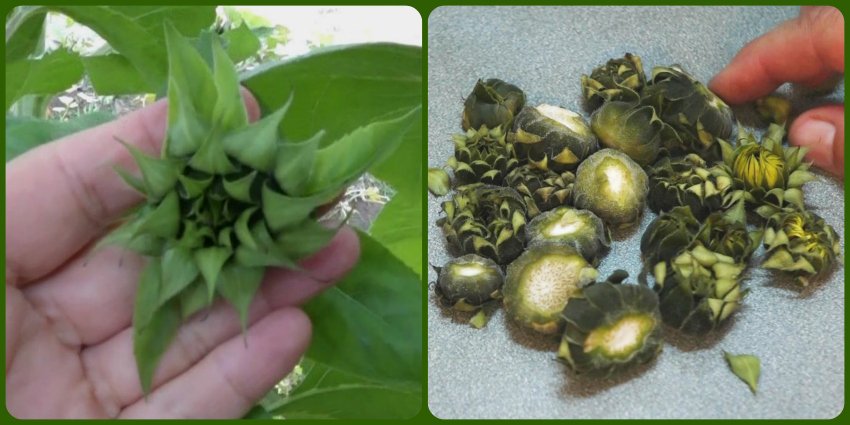
Four Recipes
Recipe 1: Basic Buds
This is the most basic recipe for cooking sunflower buds. It works really well for smaller buds. Just sautee them in olive oil or butter. Season to taste with salt and pepper, lemon and pepper, wild sumac spice, or whatever you like. That’s it. These smaller sunflower buds taste like a combination of sunflower seeds and artichokes. They are delicious.
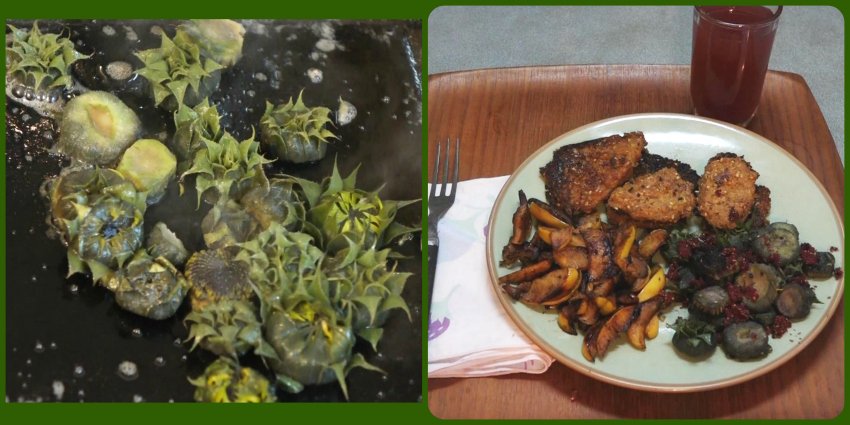
Recipe 2: Grilled Buds
Buds from the second harvest off a sunflower tend to have a stronger pine resin flavor. There aren’t many grocery store foods that have this resin flavor, so non-adventurous eaters may not enjoy it. But if you like the flavor in the new growth of spruce trees or other members of the Pine family, go ahead and prepare second harvest buds like you would any others.
This recipe, though, will get rid of the pine flavor, even in second-growth buds. It’s easy. After the basic two-stage blanching process, just grill the buds. A cast iron grill pan works great indoors! Season the grilled buds to taste and enjoy!
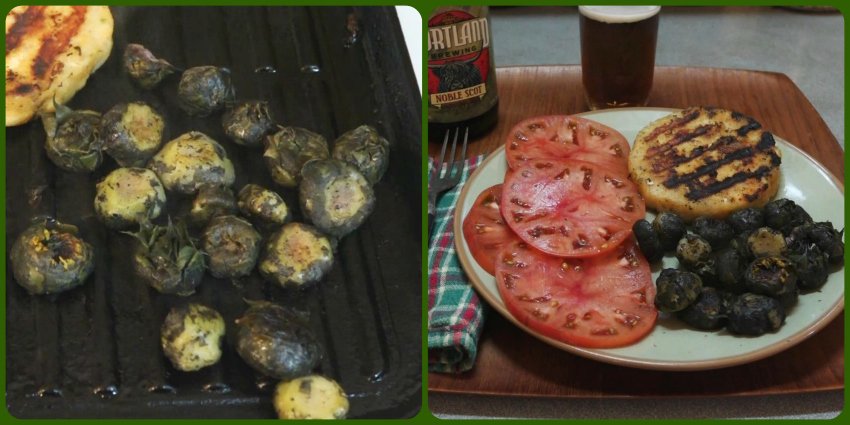
Recipe 3: Sunflower Bud Soup
If you save the water from the second blanching of the buds, you can make some great soup! It tastes like liquid sunflower seeds. One of my favorite combinations is with fingerling potatoes, sweet corn, wild chives, and a tin of smoked herring. But really, it would be hard to go wrong with any combination of fresh ingredients.
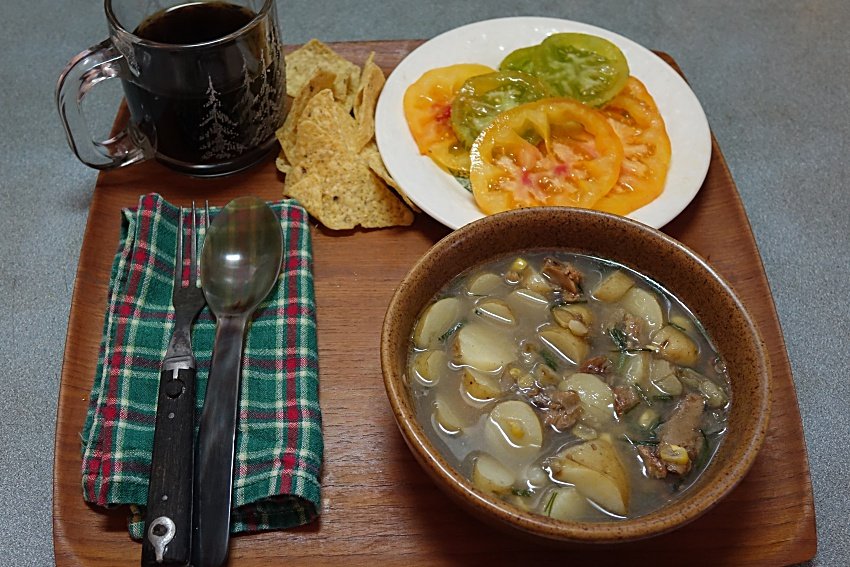
Recipe 4: Faux Artichokes – Fauxtichokes?
Artichokes can be expensive to buy and they aren’t easy to grow everywhere. Even here at Haphazard Homestead, where artichokes pretty much take care of themselves, the harvest season can be short. But large sunflower buds make a great substitute for artichokes.
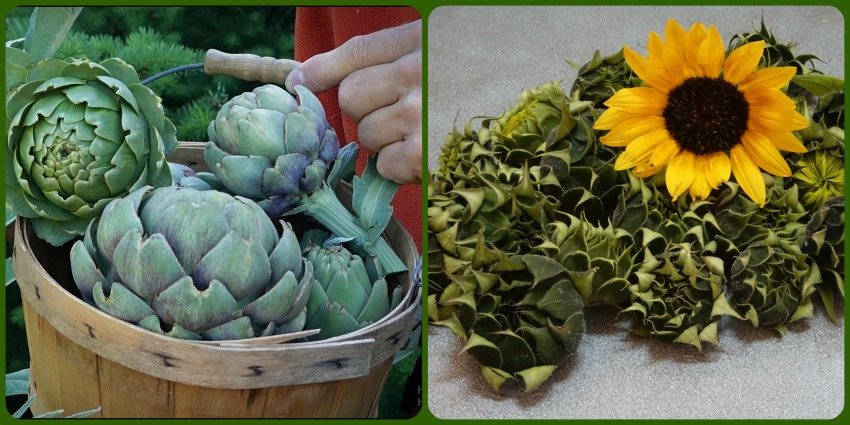
The key is to use the larger sunflower buds. They taste the most like artichokes. After the basic blanching, let them cool or rinse them in cold water, until you can handle them easily.
Now, just trim off the back of the bud and get the bigger green leaves off the bud, until it looks like an artichoke bud. For the trimming, a knife works best. On the smaller buds, I think kitchen scissors make the trimming a little easier. This is messy, but trimming an artichoke is messy, too!
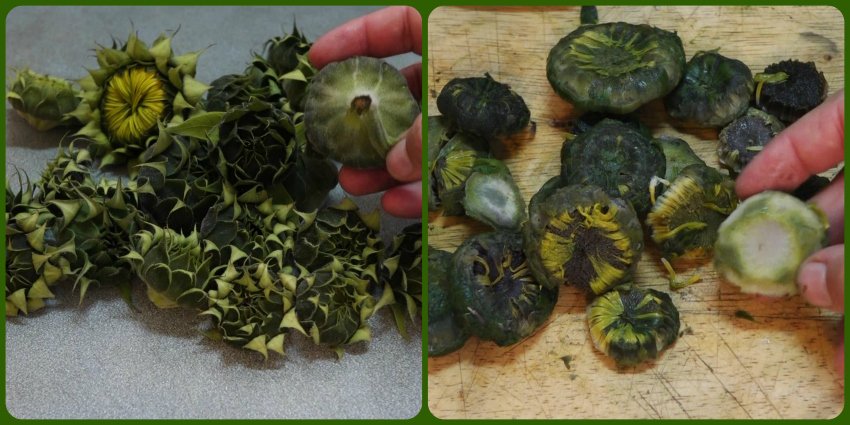
At this point, you can use the sunflower buds however you like to prepare artichokes. I'm sure you can make something fancier than me!
For this recipe, I just sautée them in olive oil with some homegrown Walla Walla Sweet onions. The buds taste like artichokes, with overtones of smokiness. The older buds that have started to open have a little pine flavor, too, that’s really pleasant.
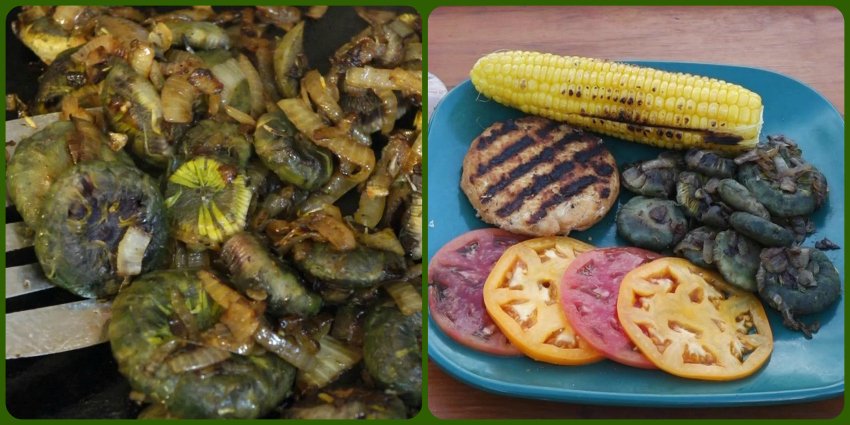
What Do You Think?
I hope you get a chance to try eating sunflower buds. They have some great, complex flavors.
I think you'll be pretty happy with how good they are! I'd like to know how you would prepare sunflower buds! Let me know in the comments below.
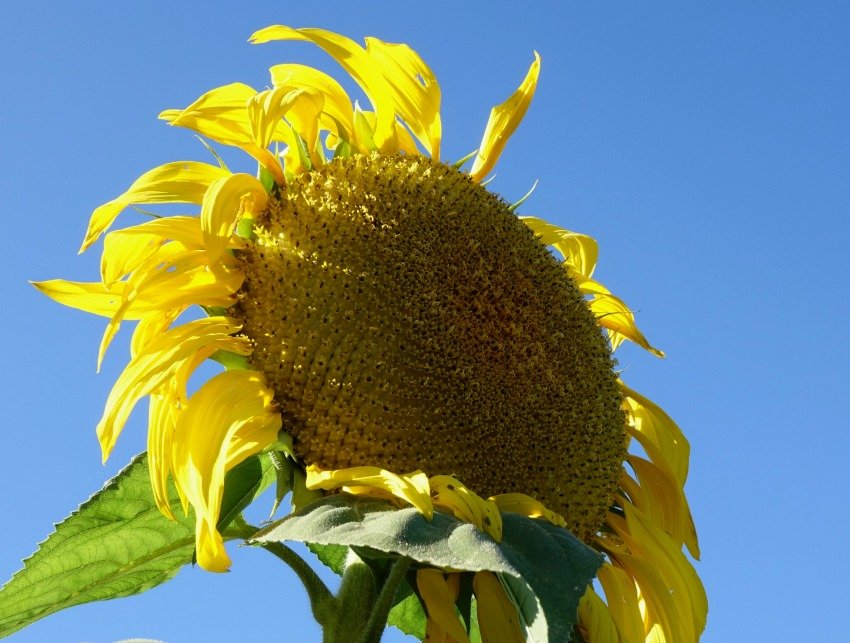
If you want watch a video about using sunflower buds for an artichoke substitute, I have a YouTube video that you might like. You will get a live taste review! Here it is:

I hope you enjoyed this post. If you want to see my posts in your feed, subscribe by clicking my name below and hit "Follow", or go to my page and hit "Follow" in the upper right corner.
foraging, gardening, nature, simple living close to the land

